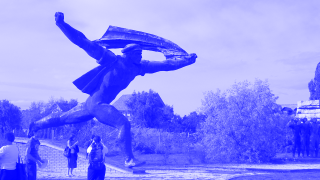Topic
Re-thinking Socialist Architectural Legacy. Urban Transformations and New Narratives of Socialist Cities

The Soviet Union’s most ambitious urban and social experiments included the construction of new »socialist cities«. When state socialism came to an end, this legacy underwent profound transformations. This study throws its spotlight on its changing perception in the context of local identities and the national narrative.
Re-thinking Socialist Architectural Legacy. Urban Transformations and New Narratives of Socialist Cities
In recent decade, the former USSR countries have faced a strong revival of interest to the socialist urban planning legacy. Various aspects of the Soviet architectural activities, previously considered as object of specific research, have gone far beyond the academic boundaries and have been integrated into public debates and diverse social and educational projects. Public appeal to the issues of socialist architecture actually implied a search for new cultural symbols and different elements of national and local identities.
The present study explores these processes, drawing on the example of so-called »socialist cities« (sotsgorods). Their construction at the turn of the 1920 and 1930s in the USSR proved to become one of the most radical and large-scale urban planning campaigns ever realized, and actually fostered an implementation of a utopian concept of »an ideal socialist living« and establishment of a completely new urban space. The fall of socialism gradually led to turning »socialist cities« into a sort of »devastated« spaces with the further loss of their functional meaning, symbolic significance and any clear narratives.
This research seeks to explore how »socialist cities« are currently integrating into the new urban reality and changing symbolic contexts. In order to achieve that, it aims a) to compare the current ways of perception of the socialist urban legacy in various local contexts of the former Soviet republics, and b) to explore how these new perceptions and attitudes affect the development of the new national narratives and local identities.

